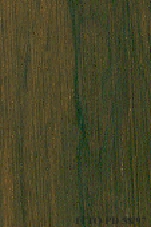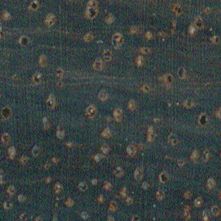
BLACK EBONY (Diospyros pilosanthera)
Trade Name
Black ebony
Scientific Name
Diospyros pilosanthera Blanco
Family
Ebenaceae
Common Names
Kayu arang (Indonesia); Balun injuk (Indonesia); Semetik (Indonesia); Kaling (Thailand); Damdong (Thailand); Nian (Thailand); Kayu arang (Malaysia); Buey (Malaysia); Ebene macassar (France); Macassar ebony (Indonesia); Tuki (India); East ind. Ebony (India); Andaman ebony (Andaman Islands); Marblewood (Andaman Islands); Tendu (Sri Lanka); Ceylon ebony (Sri Lanka); Coromandel ebony (Indonesia); Macassar ebony (United Kingdom); Kayu hitam (Indonesia); Ebony (Papua New Guinea); Ebenholz makassar (Germany); Ebano di macassar (Italy); Makassar ebben (Netherlands); Bolong eta (Philippines); Thailand ebony (Thailand); Sora (Indonesia)
Scientific Name Synonyms
Diospyros hiernii Koord. & Valeton ex Koord.
Description Of The Tree
Botanical Description
It is a medium-sized to fairly large tree up to 40 m tall. The bole is branchless for up to 32 m, up to 85 cm in diameter, with buttresses up to 4 m high.
Natural Habitat
This species is reported in primary lowland forests, sometimes in peat swamp forests or swampy locations, up to 900 m of altitude.
Wood Identification
Anatomic Description Of Wood
Wood diffuse porous. Colored deposits in heartwood vessels. Occasionally tyloses common. Vessels per mm2 less than 6 (rare). Simple perforation plates. Vessel-ray pits similar to intervessel pits in size and shape. Intervessel pits small, 7 micras or less. Apotracheal axial parenchyma diffuse and/or diffuse in aggregates. Axial parenchyma reticulate. Prismatic crystals in chambered axial parenchyma cells and/or in fibers. 5 to 8 cells per parenchyma strand. Axial parenchyma bands more than 3 cells wide. Rays more than 10 per mm (abundant). Ray height more than 1 mm. Body ray cells procumbent with mostly 2 to 4 rows of upright and/or square marginal cells (Kribs-II). Fibers with simple to minutely bordered pits.
-
 Wood Macro Photo Tangential Plane
Wood Macro Photo Tangential Plane
-
 Wood Micro Photo Of Transversal Section
Wood Micro Photo Of Transversal Section
Availability
Cites Status
CITES III
General Wood Description
Odor
It has no distinct odor or taste.
Color
The heartwood is dark brown or black and may have reddish stripes, sometimes with pale green, distinctly demarcated from the sapwood which is yellowish-white to pale reddish-brown.
Grain
It varies from straight to shallowly interlocked.
Texture
The texture is very fine, its vessels contain dark or crystalline glistening black deposits.
Luster
This species is moderate in luster.
Natural Durability
It is very durable, it has good weathering properties.
Natural durability index (1= Very high durability, 7=Vey low durability)
2
Resistance To Impregnation
The wood is extremely resistant to preservative treatment, but the sapwood is moderately permeable.
Wood Physical Properties
Basic Density or Specific Gravity (O.D. weight/vol. green) (g/cm³)
0.69
Air-dry Density (Weight and volume at 12%MC) (g/cm³)
0.77
Total shrinkage Tangential (Saturated to 0%MC) (%)
11.3
Total shrinkage Radial (Saturated to 0%MC) (%)
6.5
Drying Defects
Ease of Drying: The wood dries fairly slowly. Boards 15 mm thick take 2.5 to 4 months to air dry from green to 15% moisture content. Drying Defects: Slight bowing and staining are reported. Kiln Schedules: Schedule recommended for Litsea.
Recommended Dry Kiln Schedule
UK-C; US-T3-C2
Dimensional stability ratio (Total Tangential Shrinkage %/Total Radial Shrinkage %)
1.7
Wood Chemical Properties
Wood Mechanical Properties
Bending Strength (MOR),12%MC (kgf/cm²)
1437
Stiffness (MOE) 12%MC (kgf/cm²)
168135
Compression parallel to fiber 12%MC (kgf/cm²)
703
Shear strength radial 12%MC (kgf/cm²)
161
Janka hardness (side) 12%MC (kgf)
704
Workability
Sawing
Stellite-tipped saws are necessary for good results.
Rotary Veneer Cutting
Very beautiful veneer can be made by slicing, but pretreatment is required. The veneer is usually used as face veneer.
Sliced Veneer
Very beautiful veneer can be made by slicing, but pretreatment is required. The veneer is usually used as face veneer.
Blunting Effect
It is considered to have a moderate blunting effect on the cutting elements.
Machining
Special cutters needed. Tearing reported when interlocked grain is present, otherwise smooth planing, turning and carving otherwise possible. Splits easily.
Planing
To plane wood with a slightly interlocked grain the cutting angle must be reduced to prevent the grain picking up.
Turning
30
Boring
Boring operations are rather easy.
Nailing
Pre-boring is necessary for nailing and screwing.
Gluing
It has a poor behavior in gluing.
Finishing
It reacts with polyester finishing, otherwise finishes well. Preparation with alcohol followed by priming recommended.
Polishing
Polishing of this wood is easy.
Response To Hand Tools
Response to hand tools is reported to be poor.
REFERENCED USES
End Uses Summary
HOUSING GENERAL, FURNITURE AND CABINETS, luxury furniture, cabinets, PLYWOOD AND VENEER, TURNING, ornaments, TOOLS, tool handles, OTHER AND MUSICAL INSTRUMENTS, handicrafts
General Housing
- 10 - Silica in Timbers
Furniture Cabinets
- 21 - Tropical timbers of the world. Part III-Southeast Asian and Oceanian Species.
Furniture, Luxury
- 22 - Dry kiln schedules for commercial woods. Temperate and tropical. Section IV-Asian and Oceanian Woods
Cabinet
- 24 - Empire Timbers
Panels, Veneers
- 25 - Directory of Timber Trade Malaysia
Turning
- 30 - Embassy of Honduras in Japan
Ornaments
- 31 - Embassy of Colombia in Japan
Tools
- 42 - Utilización Industrial de Nuevas Especies Forestales en el Perú.
Tool Handles
- 43 - Maderas de Bolivia (Características y Usos de 55 Maderas Tropicales)
Other & Musical Instruments
- 63 - Madeiras do Brazil II
Handcraft
- 66 - Maderas latinoamericanas. VII. Caracteristicas anatomicas. propiedades fisicomecanicas, de secado, y tratabilidad de la madera juvenil de Cordia alliodora (Ruiz & Pav. Oken.)
Please Provide Information To View Producer Information